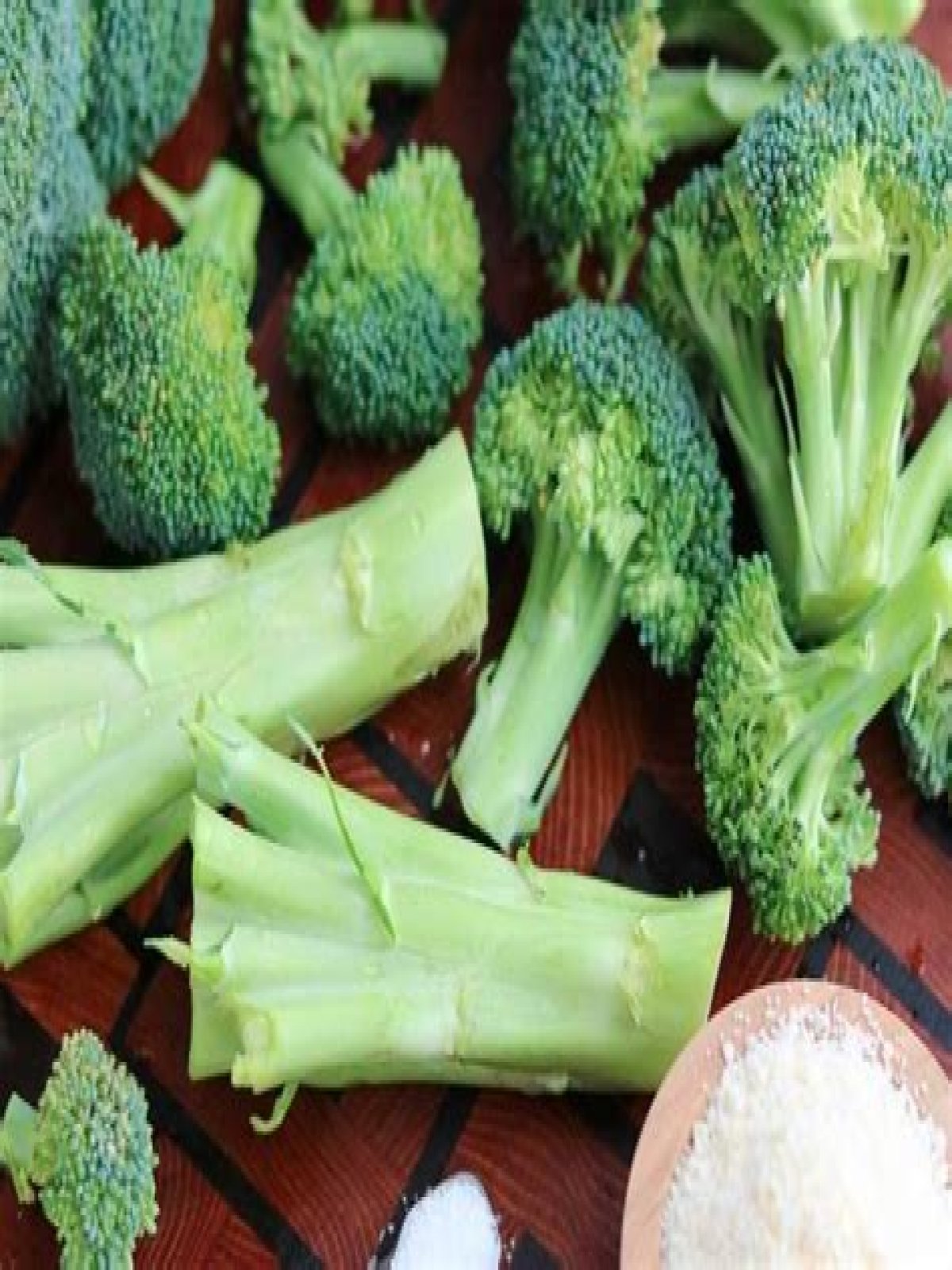Likewise, people ask, are broccoli stalks good for you?
Another good thing about the broccoli stalks is that they are very good for you. That means the stalks are high in calcium, iron, Vitamin A, potassium, and magnesium, and are even pretty high in protein for a vegetable. It probably has anti-cancer properties. The stalk is not food waste!
Also Know, can you eat broccoli with hollow stem? Do not buy broccoli with hollow stems. Avoid buying dried or wilted broccoli florets.
Furthermore, what can I do with broccoli stalks?
What can you do with the stems of broccoli when your family only wants to eat the florets? Here are 10 ways to use up broccoli stems.
- Make cream of broccoli soup.
- Peel and slice lengthwise to serve raw as crudités.
- Shredded broccoli stalks are an excellent in place of cabbage in coleslaw.
- Make broccoli stem pesto.
How do you cut broccoli stems?
Pull or cut away any leaves from the stalk and hold it down on a cutting board with your nondominant hand. Cut away the outer layer of florets. Continue cutting off the rest of the florets. Halve or quarter the larger florets into smaller pieces if needed, and cut away the woody outer skin from the stalk.
What part of the broccoli is the healthiest?
Does broccoli have to be boiled?
Are broccoli florets healthy?
Do you have to peel broccoli stalks?
What is the most nutritious vegetable?
- Spinach. This leafy green tops the chart as one of the healthiest vegetables, thanks to its impressive nutrient profile.
- Carrots. Carrots are packed with vitamin A, providing 428% of the daily recommended value in just one cup (128 grams) (4).
- Broccoli.
- Garlic.
- Brussels Sprouts.
- Kale.
- Green Peas.
- Swiss Chard.
Is broccoli good to eat everyday?
What is the top of broccoli called?
How do you store fresh broccoli?
What goes well with broccoli?
- Produce: bell pepper, cauliflower, chiles, leek, lemon, lime, mushroom, olives, onion, orange, potatoes, salads, scallion, shallot, spinach, sprout, squash, tomatoes, and watercress.
- Herbs & Spices: basil, chives, cilantro, coriander, curry, dill, ginger, parsley, sage, salt, tarragon, thyme, and turmeric.
